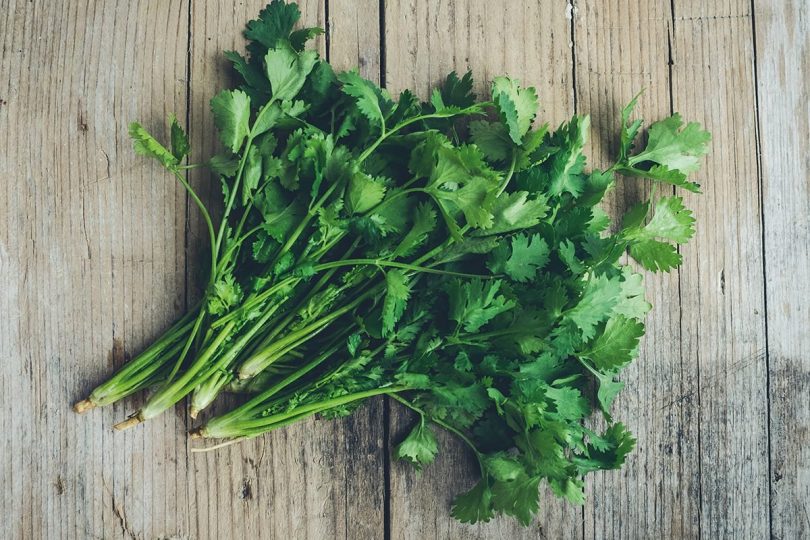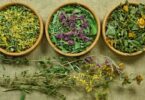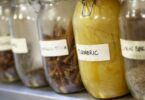Here is everything you need to know about drying coriander at home.
Coriander is a plant that is part of the parsley family. As an herb and spice, coriander has become a key ingredient in many Indian, Asian, Latin American, and European cuisines.
Because of its distinctive citrusy and soapy taste, people typically love the plant or hate it. Of course, those who do love using it for their culinary projects will naturally look for ways to preserve their coriander stash.
One of the most common ways to do so is to dry the plant. This ensures that you always have a ready supply of coriander when the need for it arises!
Coriander vs. Cilantro: Is there a difference?
Coriander and cilantro both refer to the same plant, which is Coriandrum sativum. In essence, they’re basically the same thing. The name just varies based on geography.
In most parts of the world, “coriander” refers to the herb and spice version of the plant. Meanwhile, in North America, “cilantro” is the term used for the fresh herb, while the dried or spice version is the “coriander”.
Since we’re concerned about drying the leaves and stalks of the coriander plant, we will be using the term “coriander” here.
SEE ALSO: 6 Food Drying Methods – Pros, Cons and Best Tips
Different Methods of Drying Coriander
This article features 5 different ways to dry coriander. No matter which method you end up choosing, the first step will always be to prep the herbs.
Prepping the coriander
Wash the coriander very thoroughly. You can even soak it in a vegetable wash for a few minutes if that’s what you prefer. A vegetable wash is usually composed of 3 parts water and 1 part vinegar.
Rinse off the wash with cool water and pat the leaves dry with paper towels. Then, proceed to any of the drying methods listed below.
Should the stems be removed?
It mostly depends on your personal preference. Coriander’s unique flavor is in its leaves. Ultimately, when the coriander leaves have dried, the stems won’t even be obvious.
If you’re planning to grind the dried coriander leaves into powder, you can do away with not removing the stems. After all, it won’t be affecting the resulting flavor in any way.
Home appliances speed up the drying process, but it can quickly release the plant’s moisture. Thus, you may lose a huge amount of the coriander’s water and essential oils. However, this can be a good choice if you prefer efficiency.
Drying coriander in a microwave
- Chop the coriander leaves and spread them between two paper towels.
- Place the coriander-filled paper towels on a microwave-friendly tray.
- Set the microwave on high and heat the leaves for around 2 minutes. Make sure to check all the time to avoid burning the herb.
- Take the tray out of the microwave and allow it to cool for a minute.
- Check if the coriander has turned brittle. If not, put it back in the microwave and heat for another 30 seconds.
Repeat the previous step until the leaves are dry and brittle.
Drying coriander in an oven
- Preheat your oven to 250 ºF.
- Coat your tray with baking spray to ensure that the coriander won’t stick.
- For this method, it’s recommended to remove the stems first. This allows the coriander leaves to dry faster and more evenly.
- Make one layer of coriander leaves on the baking tray.
- Place the tray in the middle of the oven to dry the leaves evenly.
- Heat the leaves for 30 minutes. Keep in mind to check the leaves every 10 minutes to avoid burning them.
Take the tray out of the oven and allow it to cool for 10 minutes. Using a spatula, scrape the leaves off the tray.
SEE ALSO: What You Need to Know to Successfully Dehydrate Food in the Oven
Drying coriander in a dehydrator
- Chop the coriander leaves and spread them evenly on a tray.
- This method is a slow dry. Thus, the dehydrator’s temperature will be set at 95 ºF.
- Place the tray into the dehydrator and let it heat for 4 to 5 hours.
Take the tray out of the dehydrator, let it cool, and crush the leaves.
Slow drying coriander with a dehydrator does a better job at retaining the leaves’ flavor and aroma.
For obvious reasons, drying coriander organically is a lot slower. However, since you’re letting the process unfold in a natural manner, the resulting products are more likely to retain their quality.
Airdrying coriander
- Gather your coriander in a bunch and tie them together by their stems.
- The knot should be as tight as it possibly can. This ensures that the stems will stay together even as the plant shrinks during the dehydration process.
- Place the bunch of coriander leaves, leaf-first, into a paper bag.
- Tie the paper bag tightly around the stems.
- Hang the covered coriander leaves by the stem in a dry area, preferably where there’s no direct sunlight (e.g., closet or pantry).
- Leave the coriander to dry for about a week.
If the leaves aren’t completely dry during this time frame, repeat the process for another week.
Drying coriander in the Sun
- Place the coriander leaves on herb drying racks and leave them under the sun.
- Rotate the racks so that the leaves will dry evenly.
- Make sure that you bring the drying rack inside during nighttime to prevent them from getting dews.
The leaves typically turn brown after 2 days or so, but the aroma will remain strong.
Storing and Preserving Coriander
Once you’re done with any of the methods above, you should transfer and store the coriander in an airtight container.
The longevity of dried coriander leaves depends on the storage conditions. You can easily prolong its shelf life when you store it away in a cool and dark place where heat and sunlight cannot reach it.
SEE ALSO: A Complete Guide on How to Store Dried Herbs
How long does dried coriander last?
At room temperature, dried coriander leaves can maintain their quality for 1 to 3 years. That is, as long as you’ve followed the proper drying and storing procedures. However, for best results, you should aim to consume them within a year.
How do you know if dried coriander leaves are still good?
To determine whether your stash of dried coriander is still potent, you can crush or rub a pinch of it in your hand, and then smell or taste it. If you find the aroma and flavor to be weak and bland, then it’s time to replace your stash.





